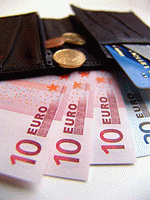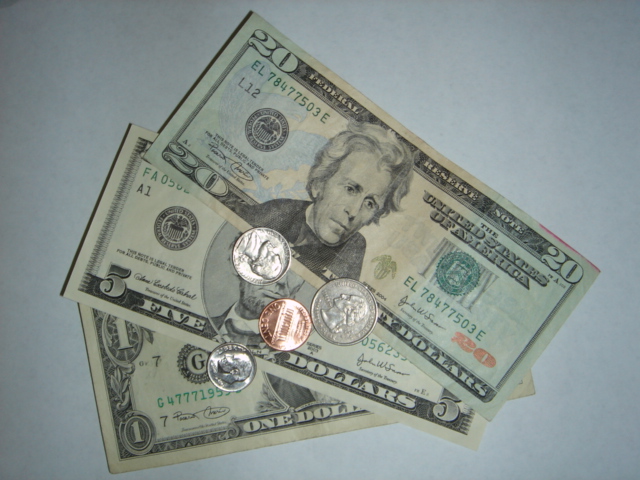

 The yen えん(円) is the base unit of Japanese currency. Note that the “y” is not actually written in the word or for the Kanji for “yen” (it’s just “en”). When it is used as a “symbol” (like $) it is written as ¥(using the \ key in Japanese mode on a western keyboard).
The yen えん(円) is the base unit of Japanese currency. Note that the “y” is not actually written in the word or for the Kanji for “yen” (it’s just “en”). When it is used as a “symbol” (like $) it is written as ¥(using the \ key in Japanese mode on a western keyboard).
There are four kinds of bills in yen (10,000円; 5,000 円; 2,000 円; and 1,000 円). There are six kinds of coins in yen (500 円, 100 円, 50 円, 10 円, 5 円, 1 円). Japanese currency is designed to facilitate easy use by people with sight impairments because all of the bills and coins are different sizes. For example, the bills descend in size from 10,000 円 to 1,000 円. Each bill also has raised bumps in the bottom, left corner (if looking at the bill from the front).
Traveler's checks and some foreign currencies can be used as a means of payment at most large hotels and at duty-free shops. However, most businesses do not accept currency other than Japanese, and many small businesses do not accept credit cards in Japan. Visitors are encouraged to change their money before leaving the airport. There are currency exchange booths in the arrivals areas of international airports. (Japan-Guide)
The ¥1,000 note features world-renowned bacteriologist Noguchi Hideyo; the rare ¥2,000 note has Murasaki Shikibu, an author of Tale of Genji; the ¥5,000 note has Higuchi Ichiyo, one of Japan's earliest feminist novelists; and the ¥10,000 note features Fukuzawa Yukichi, who was a famous author. All four notes incorporate the latest in anti-forgery design. With holes through the center of the ¥50 and the ¥5 coins, these are considered lucky and often used as charms (they can be collected on a string through the center holes).
The exchange rates between the Japanese Yen and other countries’ currencies fluctuates each day, but it easy to think of the rate between ¥ and $ as roughly 100 to 1 (¥100 to $1). For example, the exchange rate on March 1, 2019, was 1 US$ = ¥111.93 and 1¥ = .008934 US$.
| いちえん (一円) | 1 Yen |
| ごえん (五円) | 5 Yen |
| じゅうえん(十円) | 10 Yen |
| ごじゅうえん(五十円) | 50 Yen |
| ひゃくえん(百円) | 100 Yen |
| ごひゃくえん(五百円) | 500 Yen |
| せんえん(千円) | 1,000 Yen |
| にせんえん(二千円) | 2,000 Yen |
| ごせんえん(五千円) | 5,000 Yen |
| いちまんえん(一万円) | 10,000 Yen |
It is interesting (and confusing) to note that the Japanese number system is based on FOUR places (note the いちまん(一万)or 10,000 Yen entry on the bottom of the chart above). In Japanese numbers you will have 1, 100, 1,000 AND 10,000 before changing back to “1” for 100,000 (いちおく、一億). The western numbering system is based on THREE places (1, 10, 100) before changing back to “1” for 1,000, and then 10 for 10,000, and then 100 for 100,000 (and after that :”1” million, etc).
Here we can see other images of the different currencies. Click on each name to hear the Japanese pronunciation.
 |
 |
 |
ユーロドル
|
ドル
|
えん(円)
|
![]() Writing Preparation
Writing Preparation
Read the information about money in Japan, and exchanging other currencies for it (and read online as well) and be prepared to answer the following questions for an assignment in this section.
Please return to the Section 2 Tasks & Assignments folder to complete the graded assignments for Section2, Part D.

© 2006 Aventa Learning. All rights reserved. Updated 2018-2019, DVHS.